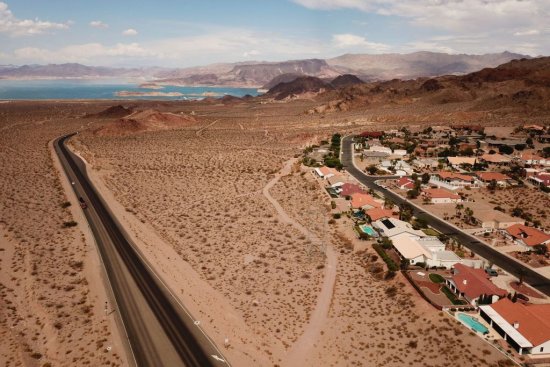
Western states finally agree to cut water use from the drought-stricken Colorado River. But the key to success will be long-term investment.
At one of Los Angeles’s main water treatment plants a few miles north of the Port of Los Angeles, a small-scale facility is demonstrating what might be part of the solution to the region’s water woes. The Pure Water Southern California Demonstration Plant facility uses membrane bioreactors, reverse osmosis, and ultraviolet radiation to process about 500,000 gallons of treated wastewater a day, further purifying it into something clean enough to use in industry, replenish the region’s groundwater, and potentially put back into the city’s drinking water system.
For now, the treated water is simply flushed back into the ocean. 500,000 gallons wouldn’t make much difference anyway—the city’s overall water usage is about a thousand times larger than what the little pilot project can deliver. But there are plans underway to massively scale up to recycle 150 million gallons of water a day, which would make a dent in the city’s water problems.
Read more: The Colorado River Drought Is a Cautionary Climate Tale
The need for such systems has been growing more urgent, as water levels in the Colorado River, which supplies Los Angeles and much of the U.S. Southwest, plummeted to record low levels last year, setting up the prospect for drastic water use cuts and inter-state showdowns over water rights. But a stroke of luck seems to have held off that eventuality for now, with an unusually wet winter replenishing snowpack in the mountains that supply the river’s water. That reprieve helped bring about a deal this week between California, Nevada, and Arizona, which share access to water from the lower portion of the river—more water meant the states could agree to far smaller water usage reductions than the monumental cutbacks originally floated last summer.
Now, with those states having avoided a true water reckoning—at least until the terms of the deal expire in 2026—it remains to be seen whether they’ll use the extra leeway to push forward long-term solutions.
“We don’t want to overreact due to the conditions of any one wet or dry year,” Thomas Piechota, a professor of engineering and environmental science and policy at Chapman University, wrote in The Hill. “Our government leaders must work together, stay committed to the investments required to enhance infrastructure, and enable innovative solutions to our water future.”
Federal funds may be coming at a good time to help push things in a positive direction. The Biden Administration announced a slew of drought resilience measures last month, funded out of $15.4 billion set aside for such programs in the 2021 infrastructure law and last year’s Inflation Reduction Act. Those include a water pipeline to help recycle water into Lake Mead, and projects to create new groundwater storage systems in California and Utah.
Read more: Arizona Faces an Existential Dilemma: Import Water or End Its Housing Boom
Still, there are forces pushing against water use changes in absence of an emergency, especially in the agricultural sector, which is responsible for 80% of the region’s water use. “Water is a valuable asset, and I think people are nervous about parting with it, because it kind of suggests that you don’t really need it after all,” George Frisvold, an extension specialist at the University of Arizona, told Grist.
And many long-term water use reductions might not come fast enough to change the situation in the next three years. The Pure Water Southern California project isn’t slated to fully come online until 2032, assuming it passes crucial regulatory hurdles. Other California water recycling systems have even longer lead times. For instance, a $16 billion plan for a much larger Southern California water conservation effort, dubbed Operation Next, is in the works, scheduled to be completed by 2058.
That may not be nearly soon enough to avert more painful cuts in the short term. But with climate change squeezing western water supplies still further in the decades ahead, the long-term investments will likely be well worth it.
A version of this story also appears in the Climate is Everything newsletter. To sign up, click here.